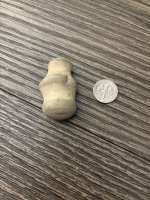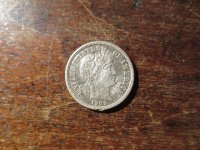baspinall
Bronze Member
- Jul 23, 2006
- 2,463
- 844
- 🥇 Banner finds
- 1
- Detector(s) used
-
XP Deus
Minelab Equinox 800
GPX 4500
- Primary Interest:
- All Treasure Hunting
Ok, I found a musket ball yesterday in a field that I know for a fact was a Rev. war battlefield. I have found lots of musket balls in the past. Some in farm fields some close or near areas of battles etc. What I want to do with this find is determine if it is British or American. It is not totally spherical so I am going by weight. Off the bat I am thinking British because of the size by eye. Then I found this web site. http://www.ehow.com/how_7633630_identify-revolutionary-war-musket-balls.html So I decide to do the math calculation of diameter by weight. This calculation doesn't make sense to me? The ball weighs 30.39 grams. Using that calculation in the article it comes out to 1.89 width? That isn't right? What am I doing wrong? Anyone ......... Need a math guru 
Brian

Brian


 The best part is the find, it may be nearly impossible to get much history on the history of one piece like that. Just hope you find more, and perhaps better items
The best part is the find, it may be nearly impossible to get much history on the history of one piece like that. Just hope you find more, and perhaps better items 




